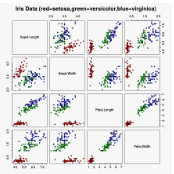Globally, cataract is a common eye disease and one of the leading causes of blindness and vision impairment. The traditional process of detecting cataracts involves eye examination using a slit-lamp microscope or ophthalmoscope by an ophthalmologist, who checks for clouding of the normally clear lens of the eye. The lack of resources and unavailability of a sufficient number of experts pose a burden to the healthcare system throughout the world, and researchers are exploring the use of AI solutions for assisting the experts. Inspired by the progress in iris recognition, in this research, we present a novel algorithm for cataract detection using near-infrared eye images. The NIR cameras, which are popularly used in iris recognition, are of relatively low cost and easy to operate compared to ophthalmoscope setup for data capture. However, such NIR images have not been explored for cataract detection. We present deep learning-based eye segmentation and multitask network classification networks for cataract detection using NIR images as input. The proposed segmentation algorithm efficiently and effectively detects non-ideal eye boundaries and is cost-effective, and the classification network yields very high classification performance on the cataract dataset.
翻译:从全球来看,白内障是一种常见的眼病,也是失明和视力受损的主要原因之一。传统的白内障检测过程涉及眼科检查,由眼科医生使用利特光显微镜或眼科显微镜进行眼科检查,他检查通常清晰眼镜的云雾。缺乏资源和缺乏足够数量的专家对全世界的保健系统造成负担,研究人员正在探索使用人工智能解决方案来协助专家。根据对白内障认识的进展,我们在这次研究中提出了使用近红外眼图像进行白内障检测的新算法。在爱丽丝识别中普遍使用的NIR摄像机成本相对较低,而且与用于数据收集的眼科显像仪装置相比易于操作。然而,没有为检测白内障而探索这种NIR图像。我们介绍了利用国家红外眼研究所图像进行深度学习的眼分解和多塔卡网络分类网络,以检测白内障。拟议的分解算法高效和有效检测非红外眼界的分解算法和高分解网络的功能和高分级数据。




